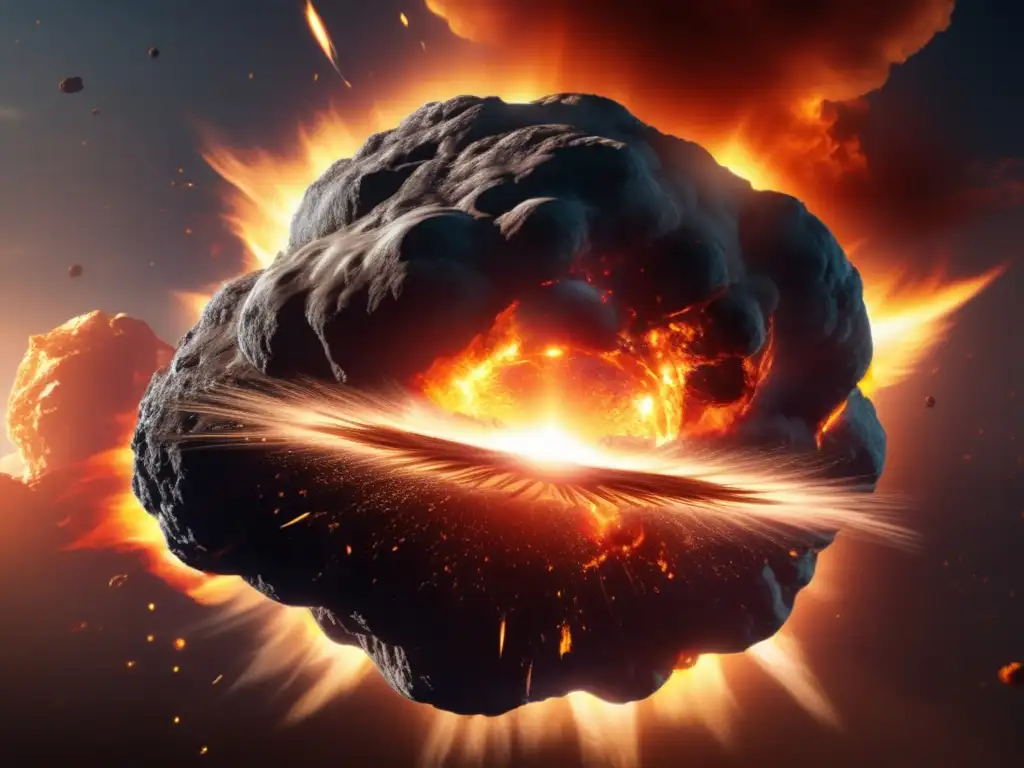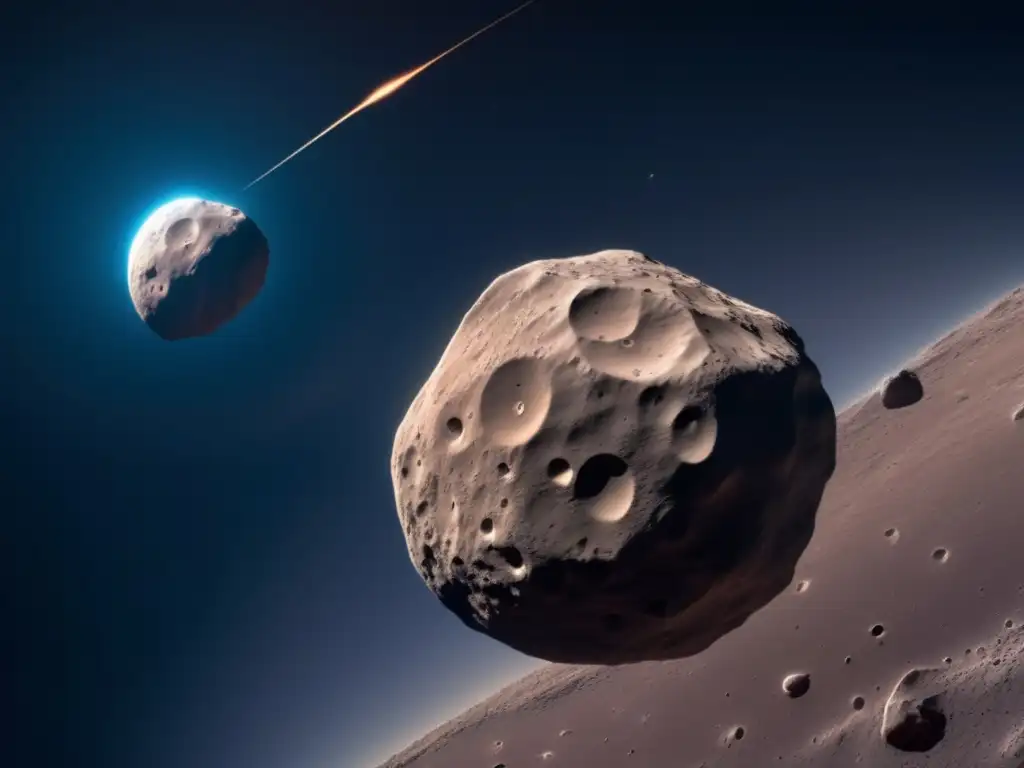Asteroid Icarus: The Sun-Grazing Asteroid

Introduction
Asteroids have long captured the fascination of astronomers and space enthusiasts alike. These celestial objects, remnants from the early formation of our solar system, provide valuable insights into the history of our universe. One such asteroid that stands out among the rest is Asteroid Icarus. Known for its unique behavior of grazing the surface of the Sun, Asteroid Icarus has intrigued scientists for years. In this article, we explore the mythology, history, and scientific significance of this extraordinary space rock.
The Mythology of Icarus

The Tragic Tale of Icarus
In Greek mythology, Icarus was the son of the master craftsman Daedalus. The story goes that Daedalus crafted wings for himself and his son to escape the island of Crete. Despite the warning not to fly too close to the Sun, Icarus disregarded his father's advice and soared higher and higher. The wax holding his wings together melted, causing him to fall into the sea and perish. This mythological tale serves as a cautionary reminder of the dangers of hubris and disobedience.
Icarus in Astronomy
The name Icarus was later given to an asteroid discovered by German astronomer Walter Baade on October 27, 1949. Its designation as 1566 Icarus pays homage to the mythical figure and the consequences of his actions. This connection between mythology and astronomy adds an intriguing layer of symbolism to our understanding of the asteroid.
The Sun-Grazing Phenomenon

What is Sun-Grazing?
Sun-grazing is a term used to describe the trajectory of certain comets and asteroids that come exceptionally close to the surface of the Sun. These objects approach within a few solar radii, sometimes even skimming the Sun's outer atmosphere, known as the corona.
The Closest Solar Approach
Asteroid Icarus has gained significant attention due to its remarkably close approach to the Sun. It holds the record for the closest known approach to our star, coming within an incredible 0.03 astronomical units (AU) or approximately 2.8 million miles from the Sun's center. This close proximity to the Sun subjects Icarus to intense heat and gravitational forces.
The Orbit of Icarus
Icarus follows an elongated orbit that takes it near the Sun and then back out into the inner solar system. Its perihelion, the point in its orbit closest to the Sun, lies within the orbit of Mercury. However, its aphelion, the point farthest from the Sun, reaches beyond the orbit of Mars.
Scientific Significance of Icarus

Studying Extreme Heat and Radiation
Asteroid Icarus provides scientists with a unique opportunity to study the effects of extreme heat and radiation on celestial bodies. Its close encounters with the Sun expose it to temperatures exceeding 1,700 degrees Celsius and extreme solar radiation. By studying Icarus, scientists can gain insights into the behavior and composition of other sun-grazing objects in the solar system.
Mission Opportunities
The characteristics of Asteroid Icarus have also attracted the attention of space agencies such as NASA and ESA. Its proximity to the Sun presents challenges for exploration, but it also opens up possibilities for missions that can utilize the Sun's gravitational pull for efficient trajectory changes. Future missions to Icarus could provide valuable data on the dynamics of near-Sun environments and advance our knowledge of space travel.
Frequently Asked Questions

-
Can Asteroid Icarus collide with the Sun?
No, Asteroid Icarus does not collide with the Sun. It grazes the surface but does not have enough gravitational energy to fall into the Sun.
-
What is the size of Asteroid Icarus?
Asteroid Icarus is estimated to have a diameter of approximately 1 kilometer (0.62 miles).
-
How does Asteroid Icarus survive the extreme heat?
The composition of Asteroid Icarus is thought to be rich in metals and able to withstand the extreme temperatures encountered during its close approach to the Sun.
-
Are there any plans for a mission to study Asteroid Icarus?
Currently, there are no specific missions planned to study Asteroid Icarus. However, its uniqueness continues to garner interest and may spur future exploration.
-
Is there a connection between Asteroid Icarus and the mythological Icarus?
While the asteroid's name pays tribute to the mythological figure, there is no direct scientific or astronomical connection between them.
Conclusion
Asteroid Icarus, the Sun-grazing asteroid, is a captivating object that merges mythology and science. Its close encounters with the Sun and its mythical namesake make it a topic of intrigue for astronomers and enthusiasts alike. By studying Icarus, scientists can deepen their understanding of extreme environments and explore new possibilities for space exploration. As we continue to unravel the mysteries of our universe, asteroids like Icarus provide us with invaluable insights into the origins and dynamics of our solar system.
We encourage you to share your thoughts and engage with the Asteroid Realm community. Subscribe to our website, share this article on social networks, and join the conversation in the comments section below. Thank you for your time and attention as we delve into the fascinating world of asteroids.
Additional Resources

For more information about asteroids and space exploration, check out the following resources:
- NASA - National Aeronautics and Space Administration
- ESA - European Space Agency
- Asteroid Realm - Exploring the Universe's Celestial Objects
 A Closer Look At The Main-Belt Asteroid Hebe
A Closer Look At The Main-Belt Asteroid Hebe Asteroid Teutonia: A Metal-rich Asteroid
Asteroid Teutonia: A Metal-rich Asteroid The Story Behind The Asteroid Pandora
The Story Behind The Asteroid PandoraIf you want to discover more articles similar to Asteroid Icarus: The Sun-Grazing Asteroid, you can visit the Asteroid Profiles category.
Leave a Reply

Articulos relacionados: